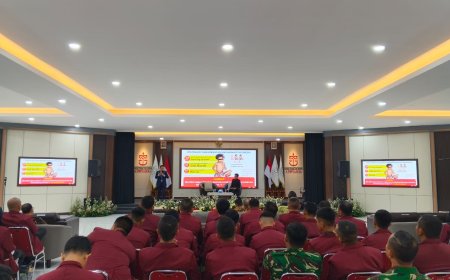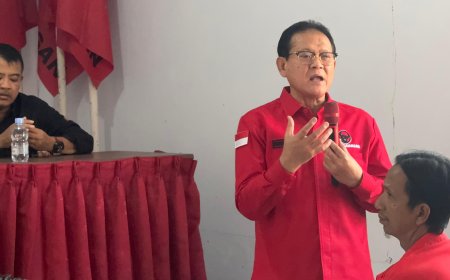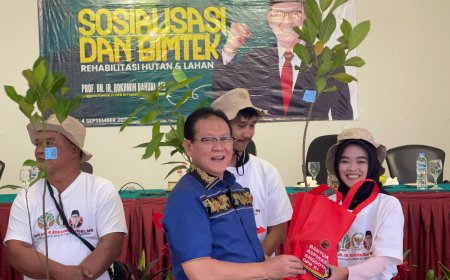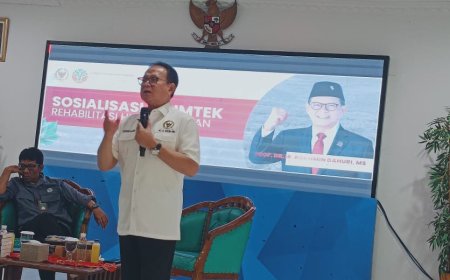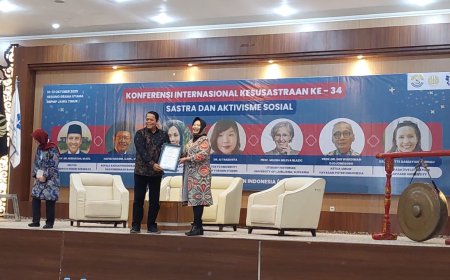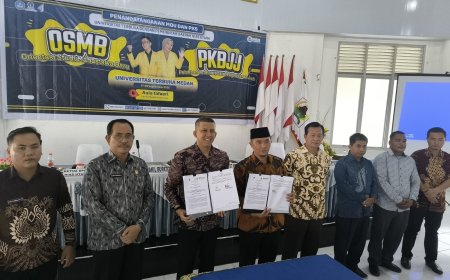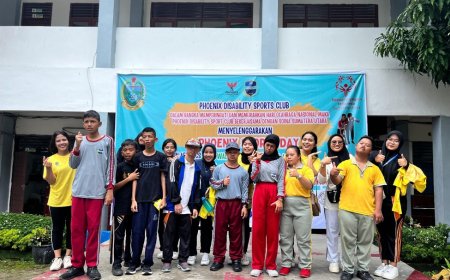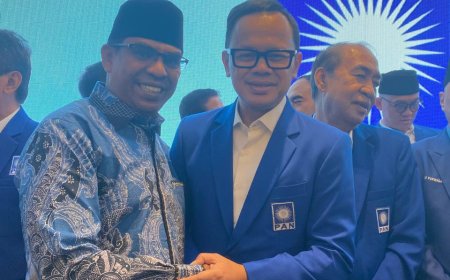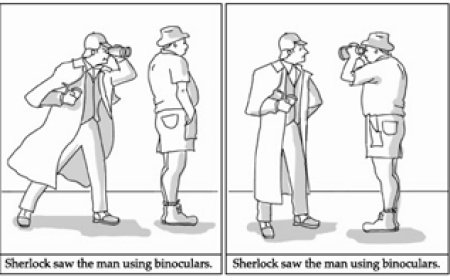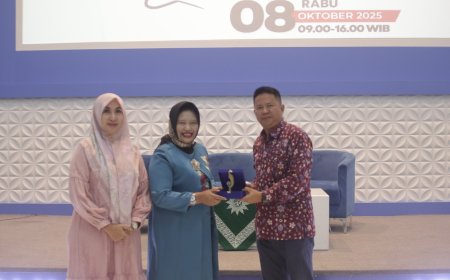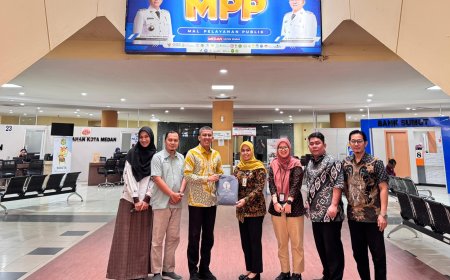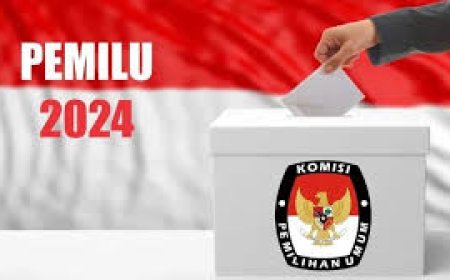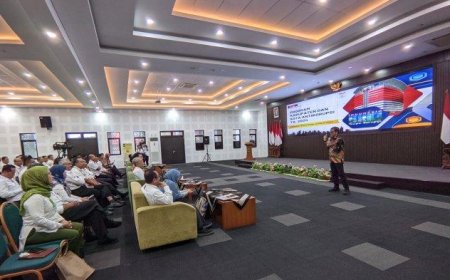Semantics and Pragmatics
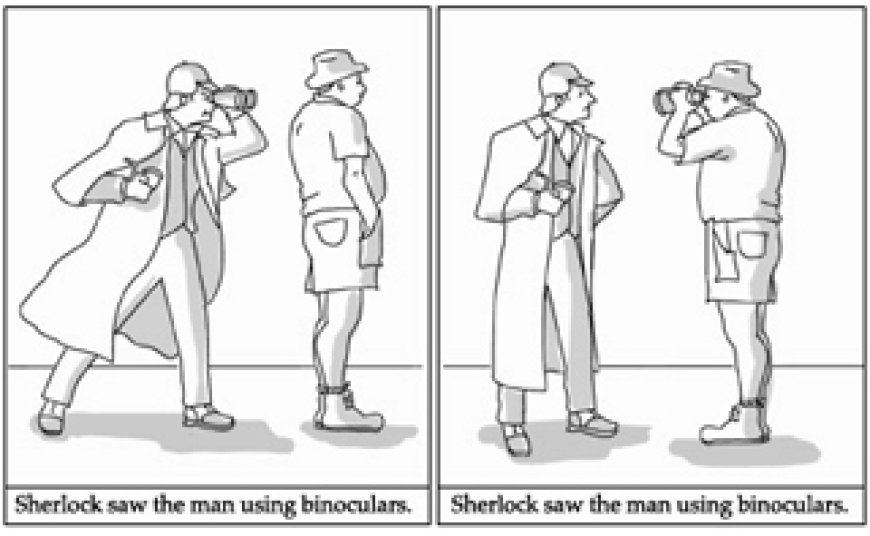
MNAINDONESIA.ID - INTRODUCTION TO SEMANTICS AND PRAGMATICS
1. Definition of Semantics
Semantics is a branch of linguistics that studies meaning in language especially the meaning of words, phrases, and sentences in a conventional or lexical sense, without considering the situational context.
It examines how meanings are formed, structured, interpreted, and related to one another within language.
Experts’ Definitions:
- Lyons (1977): Semantics is the study of meaning in language.
- Palmer (1981): Semantics is the technical term used to refer to the study of meaning.
- Hurford & Heasley (1983): Semantics is concerned with the systematic study of meaning, and linguistic semantics is the study of how languages organize and express meanings.
- Leech (1981): Semantics deals with the meaning of words and sentences apart from context.
2. Definition of Pragmatics
Pragmatics is the branch of linguistics that studies the meaning of utterances in relation to their situational context, the speaker, and the hearer.
It focuses on how meaning can change depending on who is speaking, to whom, when, and where the communication takes place.
Experts’ Definitions:
- Levinson (1983): Pragmatics is the study of the relation between language and context that are basic to an account of language understanding.
- Yule (1996): Pragmatics is concerned with the study of meaning as communicated by a speaker (or writer) and interpreted by a listener (or reader).
- Mey (2001): Pragmatics studies the use of language in human communication as determined by the conditions of society.
- Thomas (1995): Pragmatics is meaning in interaction.
3. Example Sentences in Semantics
Focus: literal meaning, sense relations (synonymy, antonymy, polysemy, hyponymy, etc.)
- “The flower is beautiful.” → Flower means a blooming (mekar) plant.
- “He bought a book at the store.” → Book means a printed object containing written text.
- “The child is smart.” → Smart means intellectually capable.
- “The sky is blue.” → Literal, context-free meaning.
- “A cat is a mammal.” → Scientific, denotative meaning.
- “Father goes to the office.” → Office means a workplace.
- “She ate a red apple.” → Apple means a kind of fruit.
- “He sits on a wooden chair.” → Chair means a seat for one person.
- “Gold is more expensive than silver.”
- “A bird is an animal that can fly.” → Bird is a hyponym of animal.
- “The shirt is clean.” → Clean means not dirty.
- “Water flows to the sea.”
- “Mother buys vegetables at the market.”
- “The sun rises in the east.”
- “He saw stars in the night sky.”
- “The table is made of teak wood.”
- “She writes a love letter.” → Letter means written communication.
- “A tiger is a wild animal.”
- “The car is red.”
- “Sugar tastes sweet.” → Literal sensory meaning.
4. Example Sentences in Pragmatics
Focus: contextual meaning, implicature, speech acts, politeness, indirectness, and implied intention.
- “It’s really hot here, isn’t it?” → Implied: asking someone to turn on the fan or AC.
- “Do you have a watch?” → Actually means: Can you tell me the time?
- “Your house is quite far, huh?” → Could express complaint or admiration depending on tone.
- “My coffee is cold.” → Implies a request to replace it.
- “You look beautiful today.” → Could be flattery or genuine praise depending on context.
- “Is there any salt?” → Implied: Please pass me the salt.
- “Wow, your room is tidy!” → Could be sarcasm if the room is messy.
- “We’ll see.” → Could mean No indirectly.
- “You’re busy, right?” → A polite preface before asking for help.
- “I’m hungry.” → Could mean Let’s eat.
- “The light is still on.” → Means Please turn off the light.
- “That lecturer is interesting.” → Could refer to personality or appearance.
- “Can you be a bit faster?” → Means Please hurry up.
- “Sorry, I forgot my wallet.” → May imply Please pay for me.
- “Your grade is great!” → Could be sincere or ironic.
- “It’s getting late.” → Implies Let’s go home.
- “He’s not bad.” → Means He’s quite good.
- “It’s raining heavily.” → Implies Let’s not go out.
- “You’re amazing!” → Could be praise or sarcasm.
- “I’m not sure that’s a good idea.” → A polite disagreement.
3. Benefits of Studying Semantics and Pragmatics in Social Life
(Manfaat Mempelajari Semantik dan Pragmatik dalam Kehidupan Sosial)
? 1. Improved Communication Skills
English:
Understanding both helps people express ideas clearly and interpret others’ words accurately, avoiding misunderstandings.
Indonesian:
Pemahaman terhadap semantik dan pragmatik membantu seseorang menyampaikan gagasan dengan jelas serta menafsirkan ucapan orang lain secara tepat, sehingga dapat menghindari kesalahpahaman dalam komunikasi.
? 2. Cultural Sensitivity and Politeness
English:
Pragmatics teaches how meaning depends on social norms, helping individuals choose language suitable for different cultural or social situations.
Indonesian:
Pragmatik mengajarkan bahwa makna sangat bergantung pada norma sosial, sehingga membantu individu memilih bahasa yang sesuai dengan konteks budaya dan situasi sosial yang berbeda.
? 3. Conflict Resolution
English:
Knowing how words can imply different meanings in context allows people to manage misinterpretations in conversations or negotiations.
Indonesian:
Mengetahui bahwa kata-kata dapat menimbulkan makna yang berbeda tergantung konteksnya membuat seseorang mampu mengelola kesalahpahaman dalam percakapan atau negosiasi.
? 4. Critical Thinking and Interpretation
English:
Analyzing language meaning sharpens the ability to understand figurative speech, irony, or hidden intentions in political and media discourse.
Indonesian:
Menganalisis makna bahasa menajamkan kemampuan berpikir kritis untuk memahami bahasa kiasan, ironi, atau maksud tersembunyi dalam wacana politik dan media.
? 5. Social Harmony
English:
Language used appropriately fosters empathy, respect, and cooperation in daily social interactions.
Indonesian:
Penggunaan bahasa yang tepat dapat menumbuhkan empati, rasa hormat, dan kerja sama dalam interaksi sosial sehari-hari.
The Scope of Semantics (Ruang Lingkup Semantik)
Below are the main aspects studied in semantics:
(Di bawah ini adalah aspek-aspek utama yang termasuk dalam kajian semantik:)
? a. Lexical Meaning (Makna Leksikal)
English: The meaning of individual words as found in the dictionary.
Example: “Fish” means an aquatic animal that breathes through gills.
Indonesian: Makna dari kata secara individual seperti yang terdapat dalam kamus.
Contoh: “Ikan” berarti hewan yang hidup di air dan bernapas dengan insang.
? b. Grammatical Meaning (Makna Gramatikal)
English: The meaning that arises from grammatical structures or word forms.
Example: “Eat” → “Eating” → “Eaten” shows how affixes change meaning.
Indonesian: Makna yang muncul karena struktur gramatika atau perubahan bentuk kata.
Contoh: “Makan” → “Memakan” → “Dimakan” menunjukkan bagaimana imbuhan mengubah makna.
? c. Sense Relations (Relasi Makna)
English: The relationship between meanings of words, including:
- Synonymy: big ↔️ large
- Antonymy: alive ↔️ dead
- Hyponymy: tuna is a type of fish
- Polysemy: “head” can mean body part, leader, or top part
- Homonymy: “can” (able to) vs. “can” (metal container)
Indonesian: Hubungan antara makna kata, meliputi:
- Sinonimi: besar ↔️ luas
- Antonimi: hidup ↔️ mati
- Hiponimi: tuna adalah jenis ikan
- Polisemi: “kepala” bisa berarti bagian tubuh, pemimpin, atau ujung sesuatu
- Homonimi: “bisa” (racun) vs. “bisa” (dapat)
? d. Ambiguity (Ambiguitas)
English: When one sentence can have more than one possible interpretation.
Example: “I saw the man with a telescope.”
(Did I use the telescope, or did the man have one?)
Indonesian: Ketika satu kalimat dapat memiliki lebih dari satu tafsir makna.
Contoh: “Saya melihat orang dengan teropong.”
(Apakah saya yang memakai teropong atau orang itu?)
? e. Denotative and Connotative Meaning (Makna Denotatif dan Konotatif)
English:
- Denotative: literal or dictionary meaning.
Example: “Rose” = a type of flower. - Connotative: emotional or cultural meaning.
Example: “Rose” = symbol of love or beauty.
Indonesian:
- Denotatif: makna literal atau objektif.
Contoh: “Mawar” = jenis bunga. - Konotatif: makna tambahan atau emosional.
Contoh: “Mawar” = simbol cinta atau keindahan.
? f. Semantic Change (Perubahan Makna)
English: How word meanings change over time.
Example: The word “girl” once meant “young person” of any gender, now refers specifically to “female child.”
Indonesian: Bagaimana makna kata berubah seiring waktu.
Contoh: Kata “bujang” dahulu berarti “pejuang muda”, sekarang berarti “pria yang belum menikah”.
? g. Theories of Meaning (Teori Makna)
English: How meaning is formed and understood, including:
- Referential theory (relation between language and real-world objects)
- Componential theory (meaning made of semantic features)
- Field theory (words have meaning within a network of related words)
Indonesian: Bagaimana makna terbentuk dan dipahami, meliputi:
- Teori referensial (hubungan bahasa dengan dunia nyata)
- Teori komponenial (makna terdiri dari unsur-unsur kecil)
- Teori medan makna (kata bermakna dalam jaringan kata lain)
Conclusion
English:
Semantics includes all aspects of meaning and meaning relations in language — from words and structure to context and change.
Semantik mencakup seluruh aspek makna dan hubungan antar-makna dalam bahasa — mulai dari kata, struktur, konteks, hingga perubahan makna.
In summary (Singkatnya):
➡️ Word and sentence meaning (Makna kata dan kalimat)
➡️ Meaning relations (Relasi makna)
➡️ Ambiguity (Ambiguitas)
➡️ Connotation and denotation (Konotasi dan denotasi)
➡️ Semantic change (Perubahan makna)
➡️ Meaning theories (Teori makna)
A. Word Meaning (Makna Kata)
(Each example shows one word and its meaning in context)
- Light – The room needs more light.
→ Light = illumination (cahaya). - Light – This bag is very light.
→ Light = not heavy (ringan). - Bank – I put my money in the bank.
→ Bank = financial institution (bank). - Bank – We sat on the river bank.
→ Bank = tepi sungai. - Run – She can run fast.
→ Run = to move quickly (berlari). - Run – My phone battery runs out quickly.
→ Run = to be used up (habis). - Cold – It’s cold today.
→ Cold = low temperature (dingin). - Cold – He gave me a cold look.
→ Cold = unfriendly (dingin secara emosional). - Head – She has a big head.
→ Head = physical part of body (kepala). - Head – He is the head of the department.
→ Head = leader (kepala/pimpinan). - Sweet – This cake tastes sweet.
→ Sweet = sugary (manis). - Sweet – She has a sweet personality.
→ Sweet = kind or pleasant (manis dalam sifat). - Bright – The sun is bright.
→ Bright = shining (cerah). - Bright – He is a bright student.
→ Bright = intelligent (cerdas). - Watch – I bought a new watch.
→ Watch = a timepiece (jam tangan).
B. Sentence Meaning (Makna Kalimat)
(Each example shows literal and contextual meaning)
- “He kicked the bucket.”
→ Literal: Dia menendang ember.
→ Contextual: He died. (Makna idiomatik: meninggal dunia). - “Time is money.”
→ Literal: Waktu adalah uang.
→ Contextual: Time is valuable and should not be wasted. (Waktu sangat berharga). - “She has a green thumb.”
→ Literal: Ibu itu punya jempol hijau.
→ Contextual: She is good at gardening. (Pandai berkebun). - “Don’t spill the beans.”
→ Literal: Jangan menumpahkan kacang.
→ Contextual: Don’t reveal the secret. (Jangan membocorkan rahasia). - “It’s raining cats and dogs.”
→ Literal: Hujan kucing dan anjing.
→ Contextual: It’s raining very heavily. (Hujan deras sekali). - “He broke her heart.”
→ Literal: Dia mematahkan hatinya.
→ Contextual: He made her very sad. (Membuatnya patah hati). - “You are walking on thin ice.”
→ Literal: Kamu berjalan di atas es tipis.
→ Contextual: You are in a dangerous situation. (Kamu dalam posisi berisiko). - “She’s on cloud nine.”
→ Literal: Dia berada di awan ke-9.
→ Contextual: She is extremely happy. (Sangat bahagia). - “The test was a piece of cake.”
→ Literal: Tes itu sepotong kue.
→ Contextual: The test was very easy. (Tesnya sangat mudah). - “He has a big mouth.”
→ Literal: Dia punya mulut besar.
→ Contextual: He talks too much. (Suka bicara berlebihan). - “She let the cat out of the bag.”
→ Literal: Dia melepaskan kucing dari tas.
→ Contextual: She revealed a secret. (Membocorkan rahasia). - “The early bird catches the worm.”
→ Literal: Burung yang bangun pagi menangkap cacing.
→ Contextual: People who act early succeed. (Siapa cepat dia dapat). - “He’s burning the midnight oil.”
→ Literal: Dia membakar minyak tengah malam.
→ Contextual: He’s working late into the night. (Belajar atau bekerja sampai larut malam). - “You hit the nail on the head.”
→ Literal: Kamu memukul paku di kepala.
→ Contextual: You said exactly the right thing. (Kamu tepat sekali). - “She’s feeling under the weather.”
→ Literal: Dia merasa di bawah cuaca.
→ Contextual: She’s not feeling well. (Sedang kurang sehat).
Based on Its Relation to Language / Berdasarkan Hubungannya dengan Bahasa
a. Lexical Meaning / Makna Leksikal
➡ The meaning contained in a word itself, as listed in the dictionary.
➡ Makna yang terdapat pada kata itu sendiri sebagaimana tercantum dalam kamus.
Example / Contoh: Table = a piece of furniture with a flat top and legs. (meja = perabotan berkaki empat tempat meletakkan benda).
b. Grammatical Meaning / Makna Gramatikal
➡ The meaning that arises from grammatical processes such as affixation, reduplication, or composition.
➡ Makna yang muncul karena proses tata bahasa seperti pengimbuhan, pengulangan, atau penyusunan kata.
Example / Contoh:
- Writing → means “doing the act of writing.” (menulis = melakukan kegiatan tulis).
- Running → repeated or continuous action (berlari-lari = kegiatan yang terus-menerus).
2. Based on Accuracy or Directness / Berdasarkan Ketepatan Makna
a. Denotative Meaning / Makna Denotatif
➡ The literal or direct meaning, as stated in the dictionary.
➡ Makna sebenarnya atau makna lugas sesuai kamus.
Example / Contoh: House = a building for living in. (rumah = bangunan tempat tinggal).
b. Connotative Meaning / Makna Konotatif
➡ The figurative or emotional meaning, often carrying positive or negative feelings.
➡ Makna kias atau tambahan nilai rasa (positif/negatif).
Example / Contoh: A warm heart = kind and caring person (hati hangat = pribadi yang baik dan penyayang).
Based on the Relation Between Words / Berdasarkan Hubungan Antar Kata
|
Type / Jenis |
Explanation / Penjelasan |
Example / Contoh |
|
Synonym / Sinonim |
Words with similar meanings |
Pretty ≈ Beautiful / Indah ≈ Cantik |
|
Antonym / Antonim |
Words with opposite meanings |
Hot ↔ Cold / Tinggi ↔ Rendah |
|
Homonym / Homonim |
Same spelling, different meanings |
Bark (sound of dog / tree skin) / Bisa (racun / mampu)* |
|
Polysemy / Polisemi |
One word, several related meanings |
Head → human head, head of office / Kepala manusia, kepala kantor |
|
Hyponymy / Hiponimi |
Hierarchical relationship |
Rose and Jasmine are types of flowers / Mawar dan Melati adalah jenis bunga |
Based on Context / Berdasarkan Konteks Penggunaan
a. Contextual Meaning / Makna Kontekstual
➡ Meaning depends on the situation or sentence where the word appears.
➡ Makna kata tergantung pada situasi atau kalimat tempatnya digunakan.
Example / Contoh:
- Chair = a seat (kursi fisik).
- Chair in “chair of the committee” = position (jabatan).
b. Situational Meaning / Makna Situasional
➡ Meaning influenced by who speaks, to whom, where, and when.
➡ Makna dipengaruhi oleh siapa yang berbicara, kepada siapa, di mana, dan kapan.
Example / Contoh:
The sentence “It’s cold here” may mean “Please close the window.”
(“Dingin sekali di sini” bisa berarti permintaan menutup jendela.)
Based on Change Over Time / Berdasarkan Perubahan Makna
|
Type / Jenis |
Explanation / Penjelasan |
Example / Contoh |
|
Broadening / Meluas |
Meaning becomes more general |
Brother now includes all male relatives / Saudara kini mencakup semua kerabat |
|
Narrowing / Menyempit |
Meaning becomes more specific |
Meat once meant all food, now only animal flesh / Sastra kini khusus karya bahasa |
|
Amelioration / Membaik |
Meaning becomes more polite |
Disabled → differently-abled / Cacat → difabel |
|
Pejoration / Memburuk |
Meaning becomes more negative |
Mistress once meant lady, now negative / Perempuan jalang bernilai buruk |
|
Metaphor / Metafora |
Figurative transfer of meaning |
The foot of the mountain, tangan besi |
|
Metonymy / Metonimia |
Meaning shifts by association |
He drinks Pepsi = soft drink / Ia minum Aqua = air mineral |
Based on Field of Study / Berdasarkan Bidang Kajian
|
Type / Jenis |
Explanation / Penjelasan |
Example / Contoh |
|
Referential Meaning / Makna Referensial |
Refers to real objects or concepts |
Book, tree, ocean / buku, pohon, laut |
|
Non-referential Meaning / Makna Non-Referensial |
Does not refer to real objects |
and, because, if / dan, karena, jika |
|
Idiomatic Meaning / Makna Idiomatik |
Fixed meaning of a phrase, not literal |
Kick the bucket = to die / Meja hijau = pengadilan |
What's Your Reaction?







